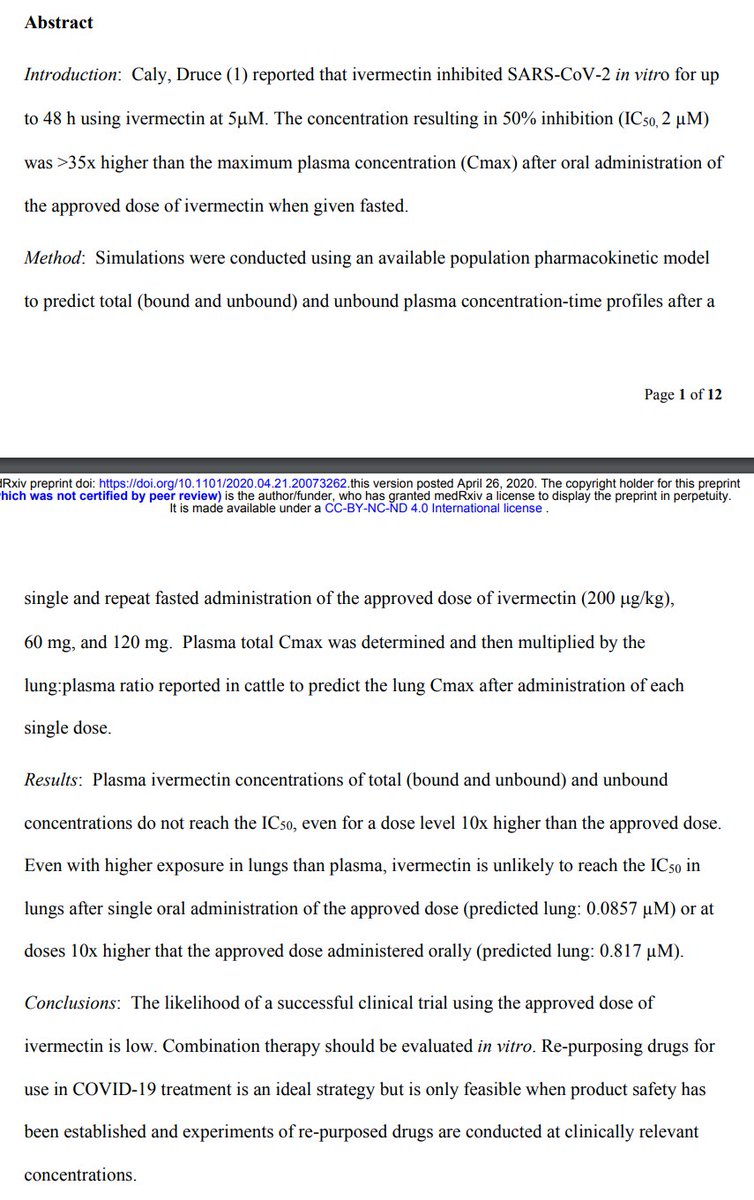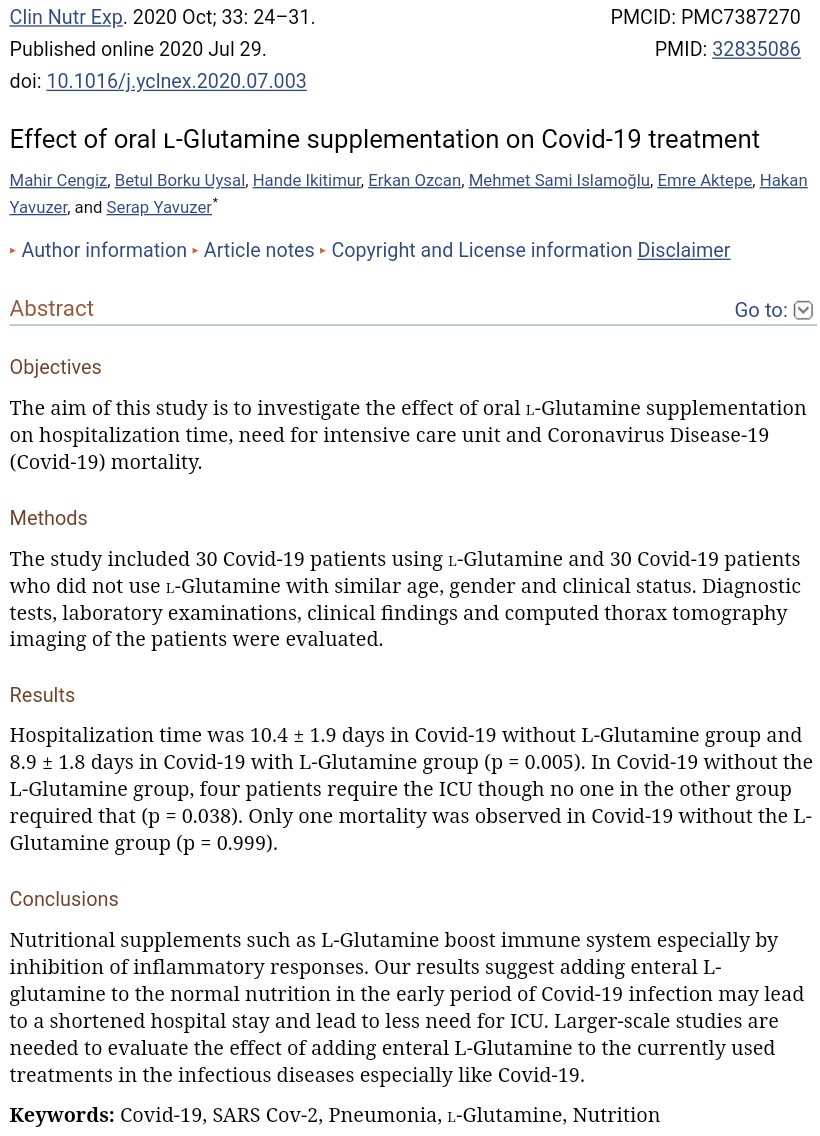How to get URL link on X (Twitter) App
https://twitter.com/__ice9/status/1365441947448586249?s=19For a medical audience:




 It costs practically nothing.
It costs practically nothing.
https://twitter.com/AP/status/1365807624629944328Even for moderate, only 66% effective....

https://twitter.com/DrToddLee/status/1356352534038908929



 You can read the protocol summary here for more details on the trial if desired:
You can read the protocol summary here for more details on the trial if desired:https://twitter.com/__ice9/status/1355565393738407940?s=19

https://twitter.com/Philly_Weather1/status/1352644811082375181



 Note I really do mean 600mg *q.i.d.* (4x/day) if tolerated; short half life. Safe in other studies.
Note I really do mean 600mg *q.i.d.* (4x/day) if tolerated; short half life. Safe in other studies.

https://twitter.com/Covid19Crusher/status/1352285616952799232Cross-referencing to dual entry inhibition thread:
https://twitter.com/__ice9/status/1343998284638134272?s=19

https://twitter.com/Covid19Crusher/status/1351822495553302529This cements the case for ivermectin as prophylaxis. The missing in vitro data is now present and consistent with observed clinical results.
https://twitter.com/Dr2NisreenAlwan/status/1352328795185963008Here are some of the most effective ones in the literature:
https://twitter.com/__ice9/status/1345622297051353088?s=19

https://twitter.com/Dharmen46587056/status/1351442451291013120L-glutamine (a GABA precursor) was studied clinically for COVID-19, but the study was poorly designed and results were rather weak. I expect little benefit from glutamine in COVID-19.




https://twitter.com/__ice9/status/1338450985728020480?s=19
 We know the 5-HT2A receptor activates platelets, and the 5-HT2B receptor promotes fibrosis. This is basic physiology.
We know the 5-HT2A receptor activates platelets, and the 5-HT2B receptor promotes fibrosis. This is basic physiology.https://twitter.com/__ice9/status/1346603548008710144?s=19
https://twitter.com/__ice9/status/1346142081148997633?s=19
https://twitter.com/__ice9/status/1308329855092756480?s=19
https://twitter.com/DaveLeeERMD/status/1346084568185581578Interestingly, antibodies to SARS-CoV-2 S2 are also somewhat cross-reactive to Annexin A2.
https://twitter.com/DaveLeeERMD/status/1275792603829723136?s=19

https://twitter.com/SanHolo24706738/status/1345450494987300864
 More on the effect of excessive plasma serotonin levels in suppressing T cell activity:
More on the effect of excessive plasma serotonin levels in suppressing T cell activity:
https://twitter.com/__ice9/status/1345649125988200449?s=19@ianbirrell You need to read this:
https://twitter.com/__ice9/status/1306673318586613760?s=19
https://twitter.com/Jopo_dr/status/1344620439767666688The things we are discussing about 5-HT2 antagonists and plasma serotonin, about attempting to halt progression in the early severe stage, are relevant *during* these events.




 @cameronks @pathdoc3 @icedoc61 @Jopo_dr @Acute_Pulmo_Med @ZaidYounes9 @Geurys7 @MARYau_MCU_PH @DrBrandon55 @VectorSting @Crashcart
@cameronks @pathdoc3 @icedoc61 @Jopo_dr @Acute_Pulmo_Med @ZaidYounes9 @Geurys7 @MARYau_MCU_PH @DrBrandon55 @VectorSting @Crashcart 
https://twitter.com/__ice9/status/1344338754740367367This provides the video that went missing when a few accounts I had quoted earlier were suspended.
https://twitter.com/__ice9/status/1308773652624797697?s=19

https://twitter.com/__ice9/status/1277388189125283840?s=19@HenkPoley This paper indicated that a single exposure to 70% ethanol largely preserved filtration efficacy, comparable to dry heat or UV sanitizing. However, further exposure events gradually worsened filtration efficacy.
https://twitter.com/Statins_Kill/status/1343885264800927744Dual entry inhibition was tested in the Ansarin et al. RCT, adding bromhexine 8mg t.i.d. to a baseline of HCQ 200mg q.d.
https://twitter.com/__ice9/status/1285711393992445952?s=19

https://twitter.com/srrezaie/status/1340778770270216197?s=19
